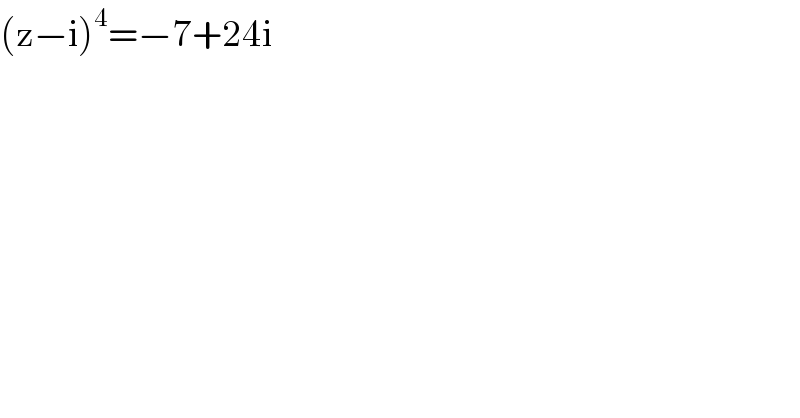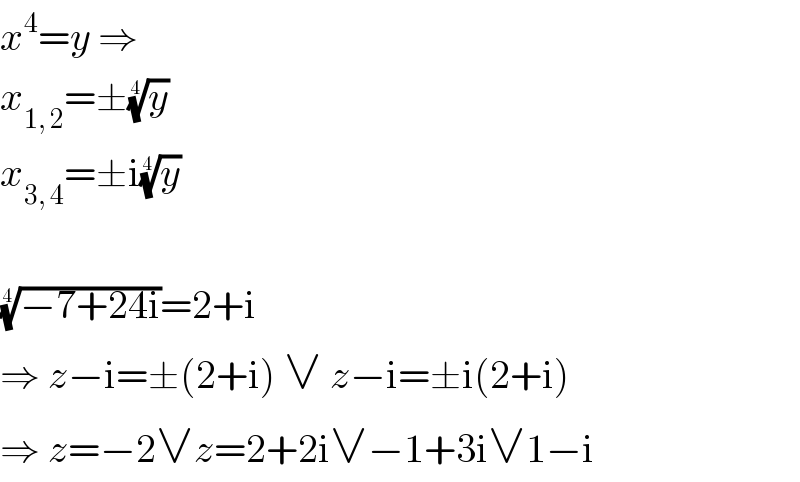
Question and Answers Forum
Question Number 71564 by 20190927 last updated on 17/Oct/19

Commented by mathmax by abdo last updated on 18/Oct/19
![we have ∣−7+24i∣=(√(7^2 +24^2 ))=(√(49+576))=(√(625))=25 ⇒ −7+24i =25 e^(−iarctan(((24)/7))) and (z−i)^4 =25 e^(−iarctan(((24)/7))) let z−i=re^(iθ) ⇒r^4 e^(i4θ) =25 e^(−iarctan(((24)/7))) ⇒r=^4 (√(25))=(5^2 )^(1/4) =(√5) 4θ =−arctan(((24)/7))+2kπ ⇒θ_k =−((arctan(((24)/7)))/4) +((kπ)/2) and k∈[[0,3]] so the roots ofthis equations are Z_k =(√5)e^(i(((kπ)/2)−((arctan(((24)/7)))/4))) +i with 0≤k≤3](Q71661.png)
Commented by 20190927 last updated on 21/Oct/19

Answered by MJS last updated on 17/Oct/19

Commented by 20190927 last updated on 21/Oct/19

